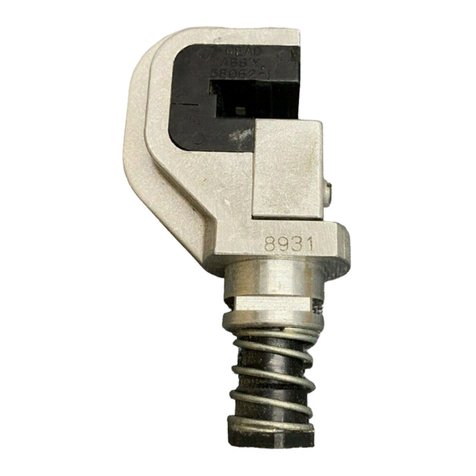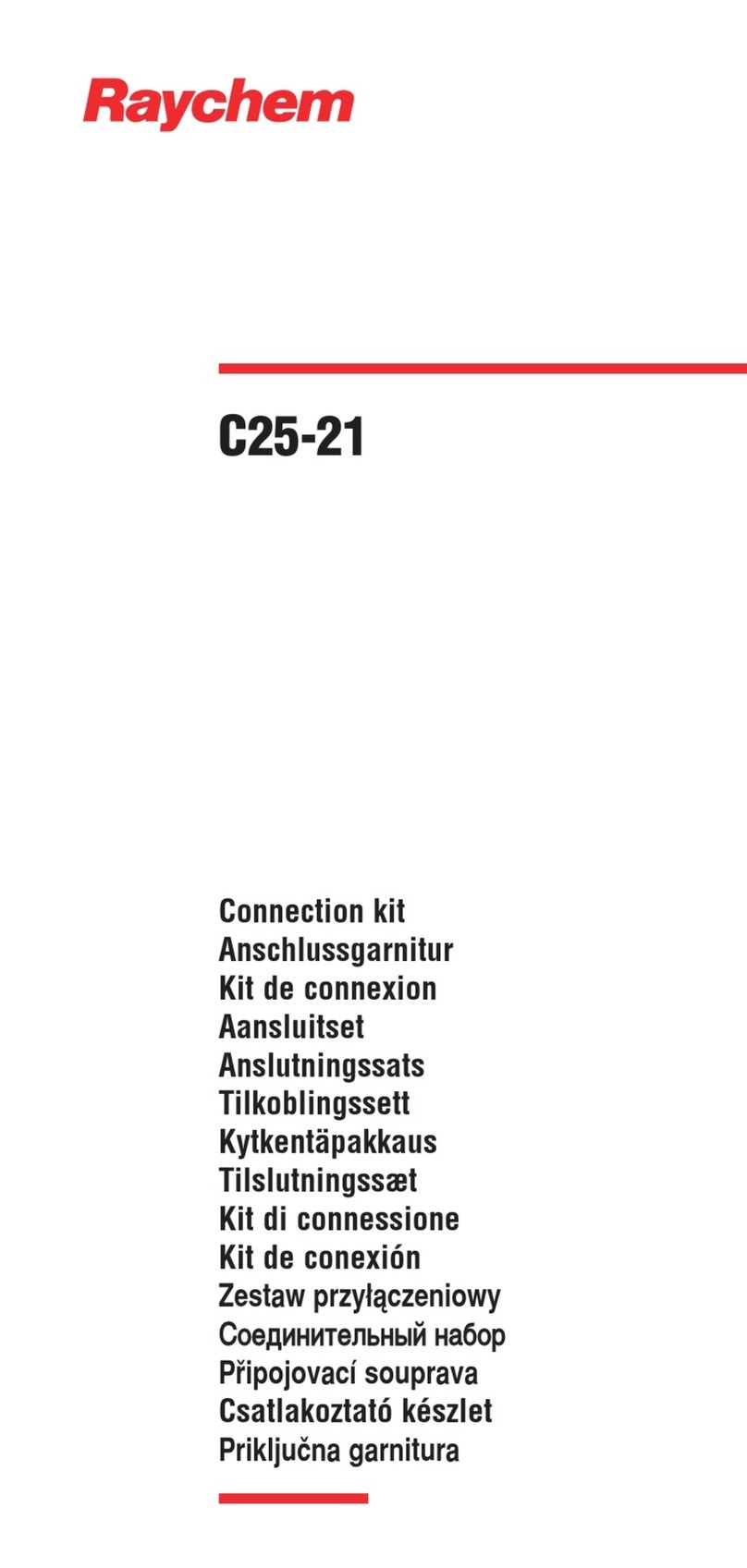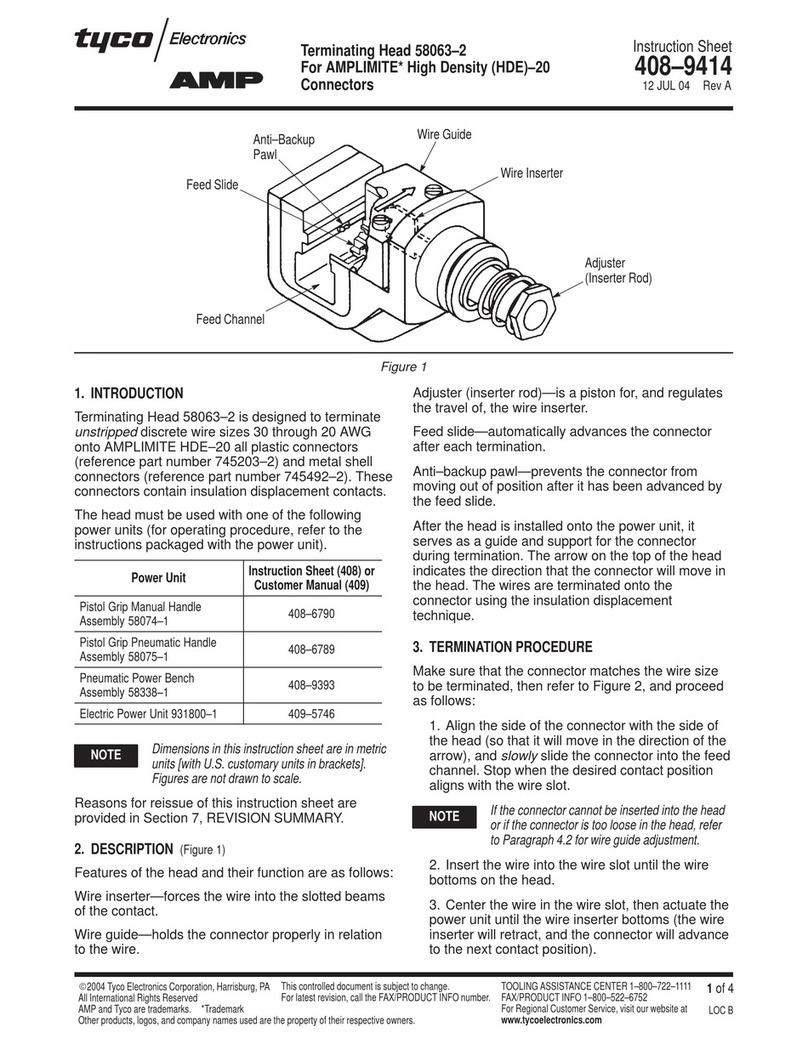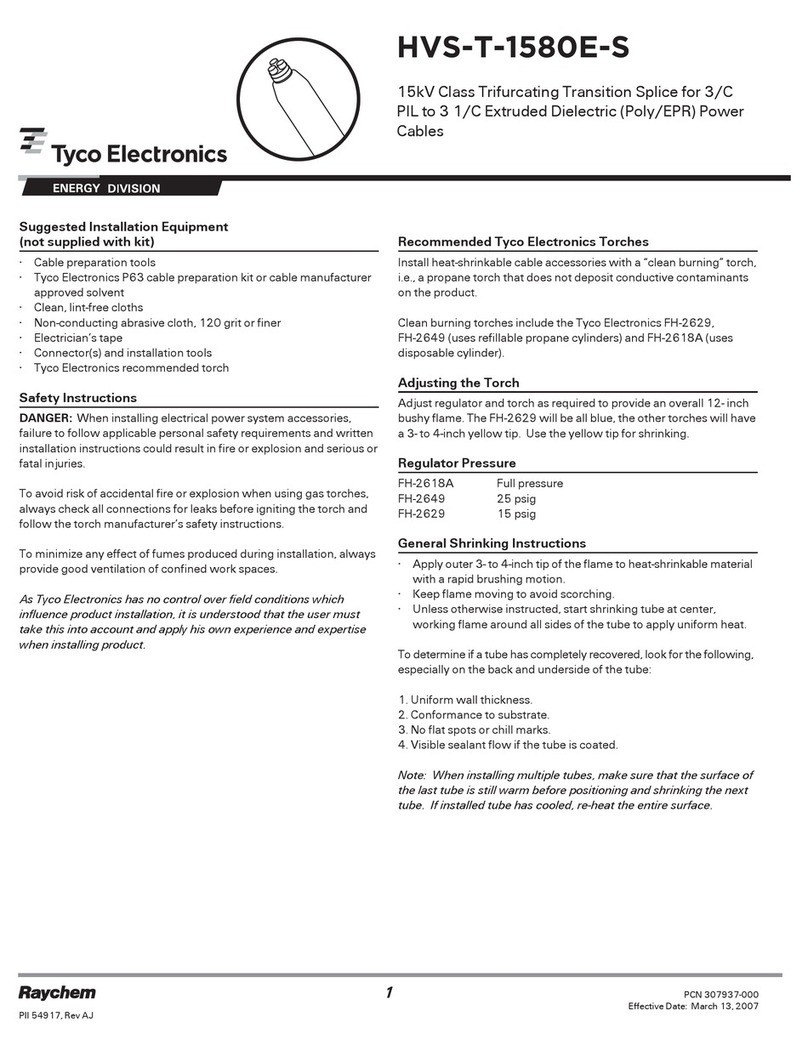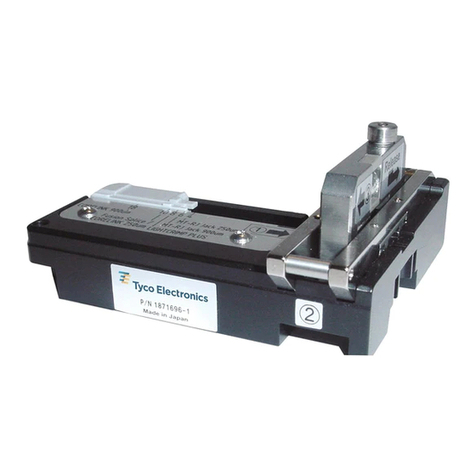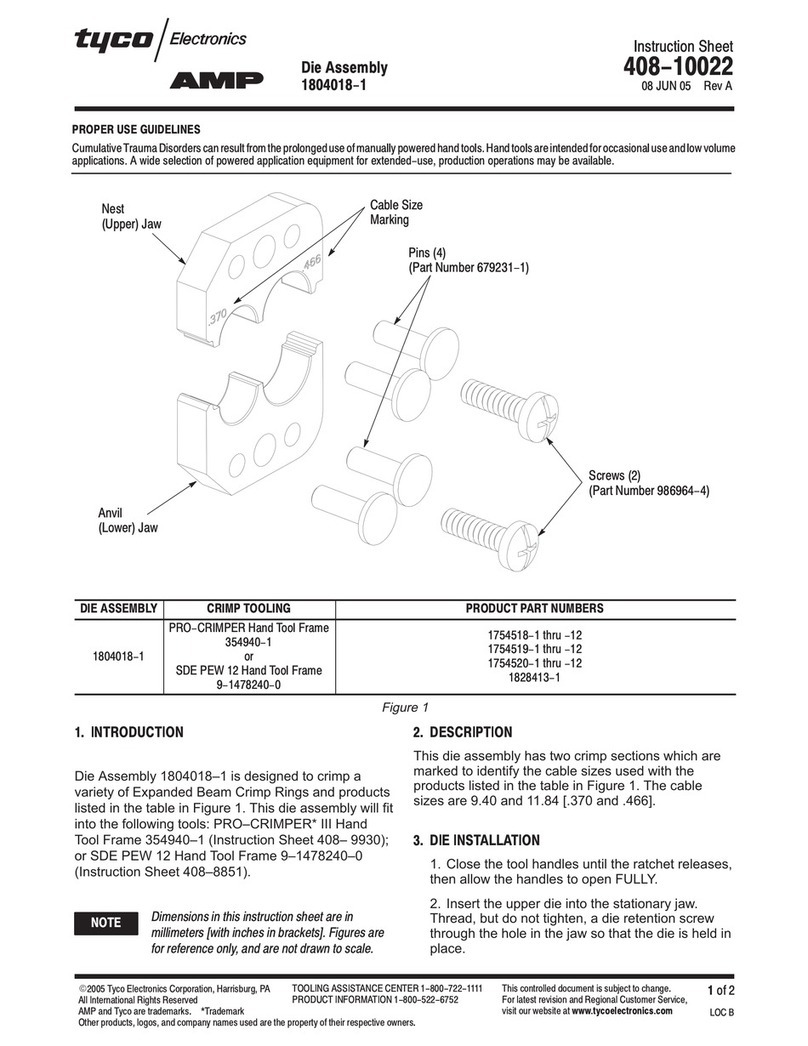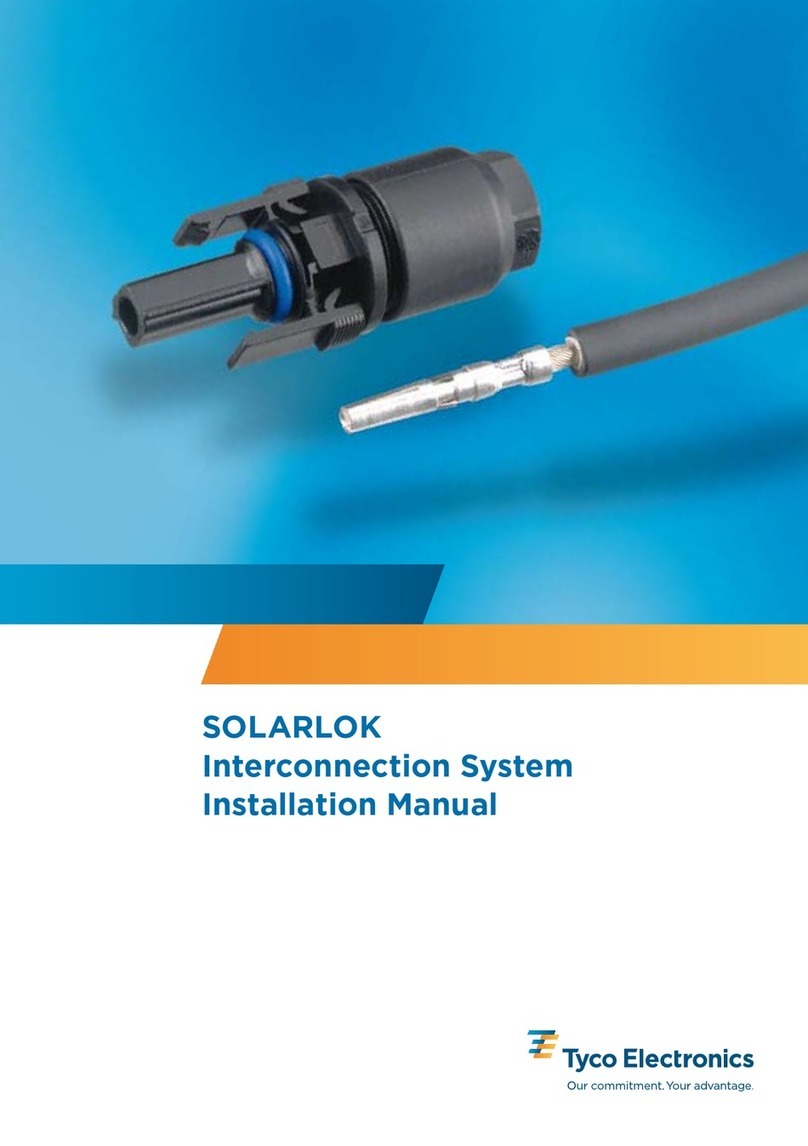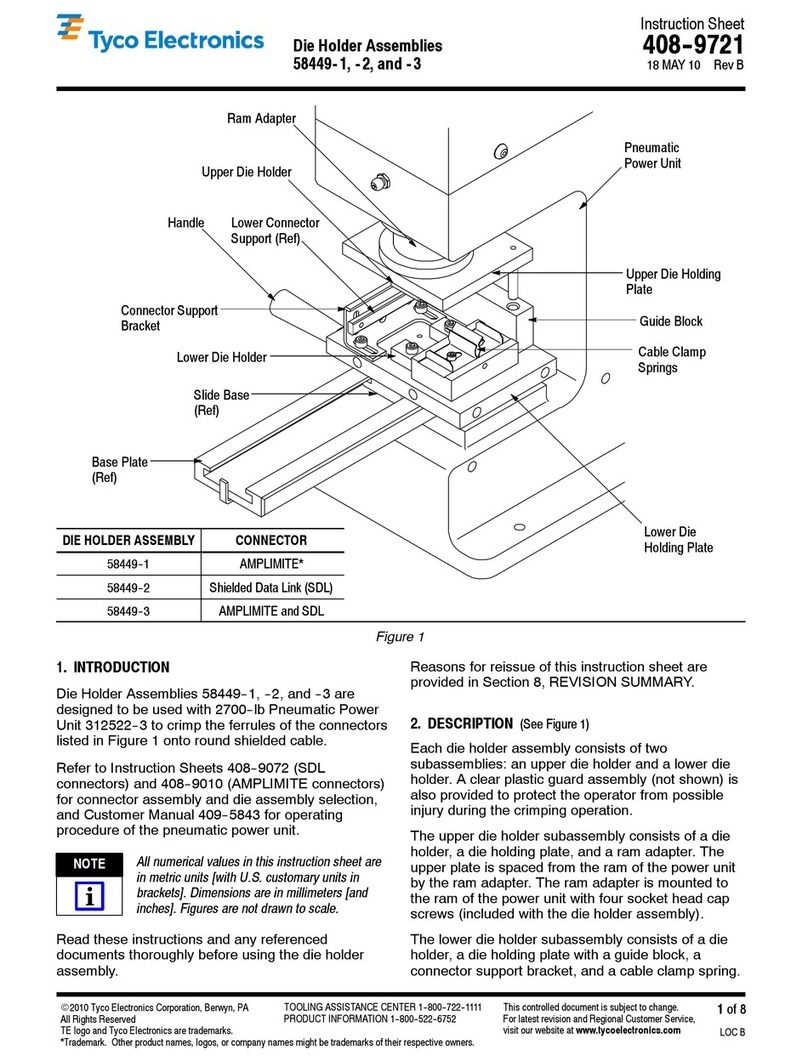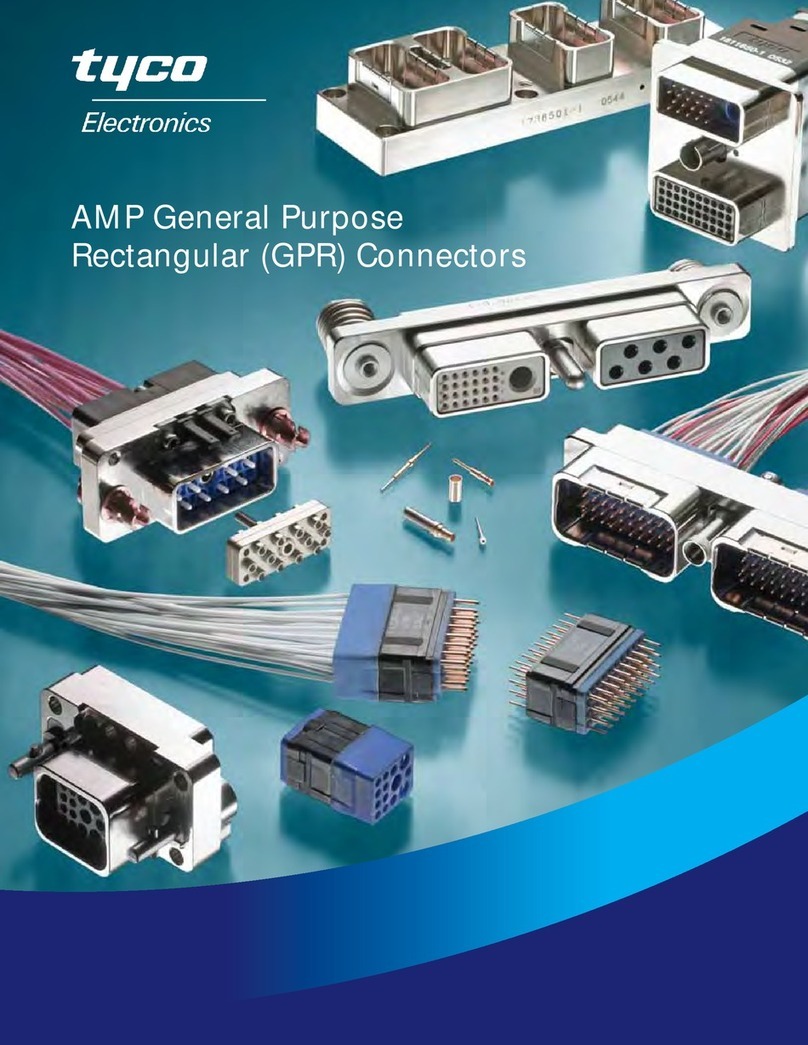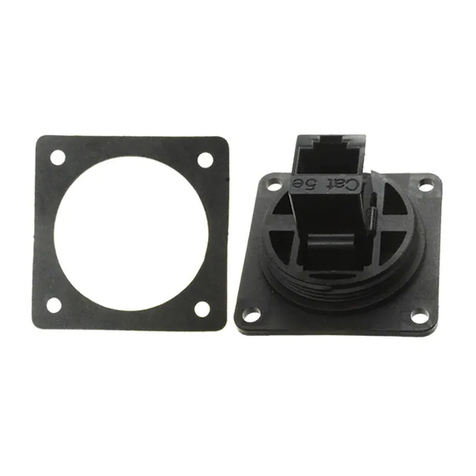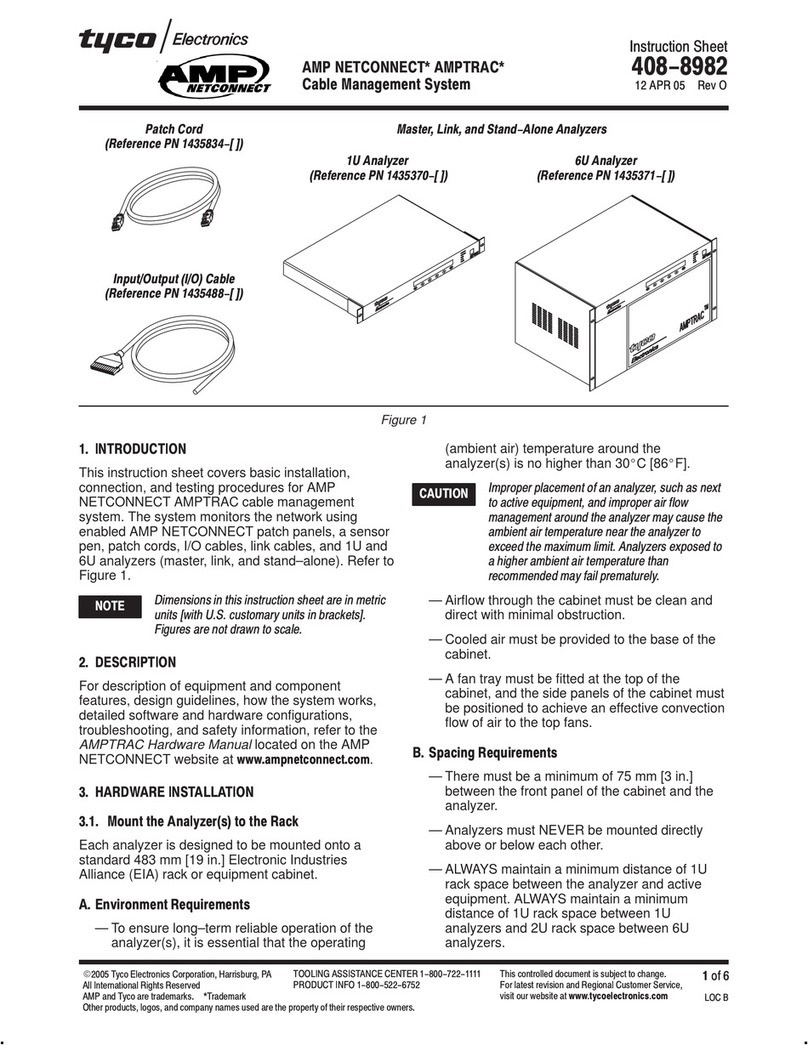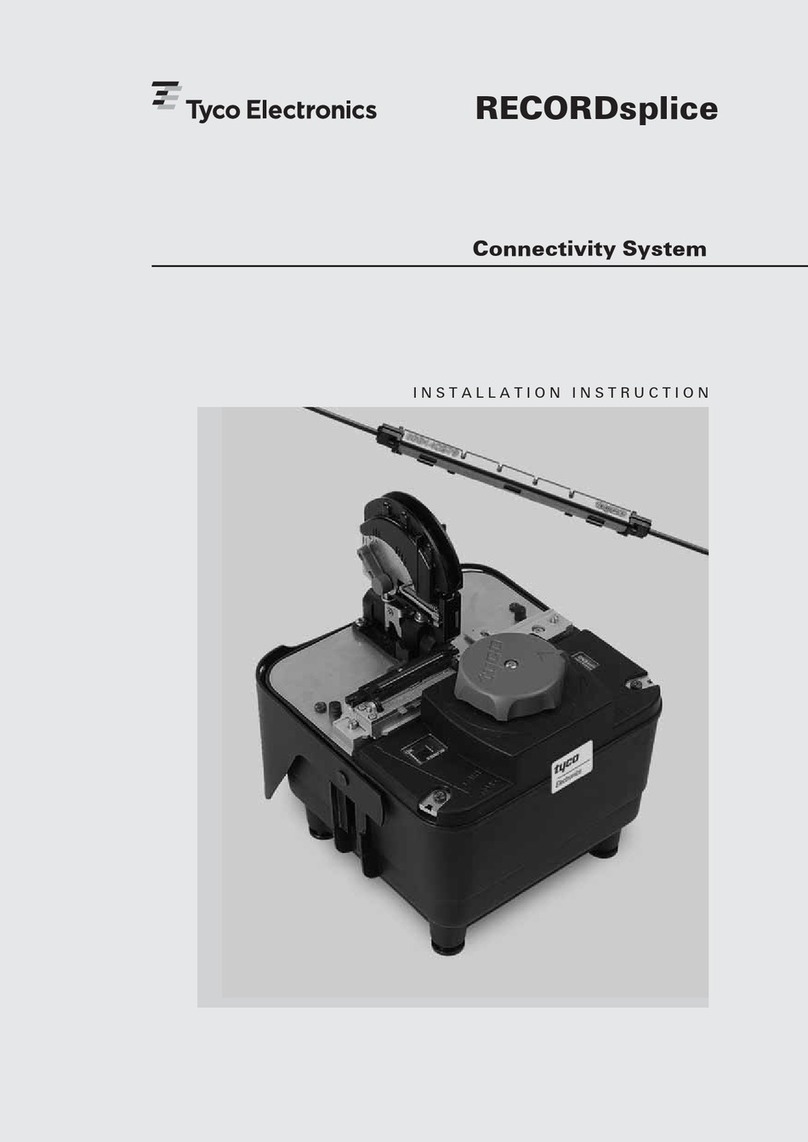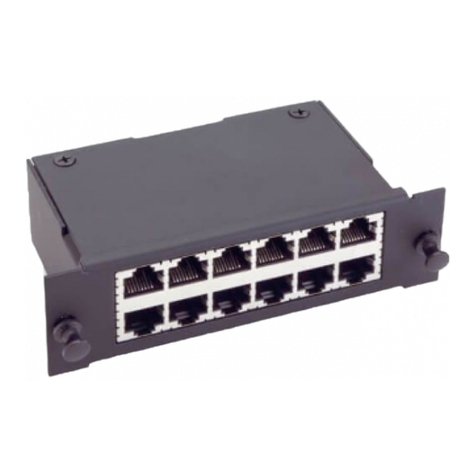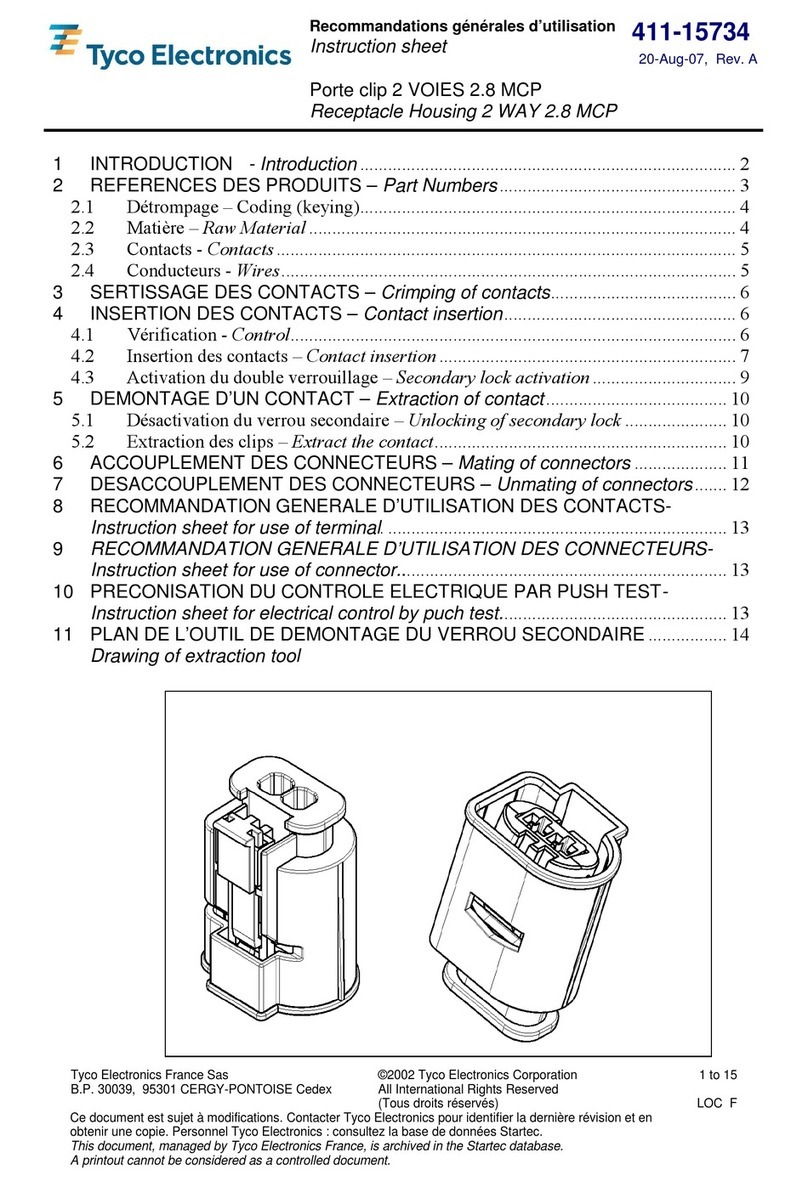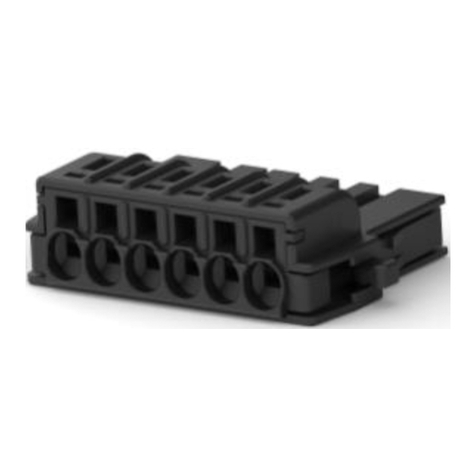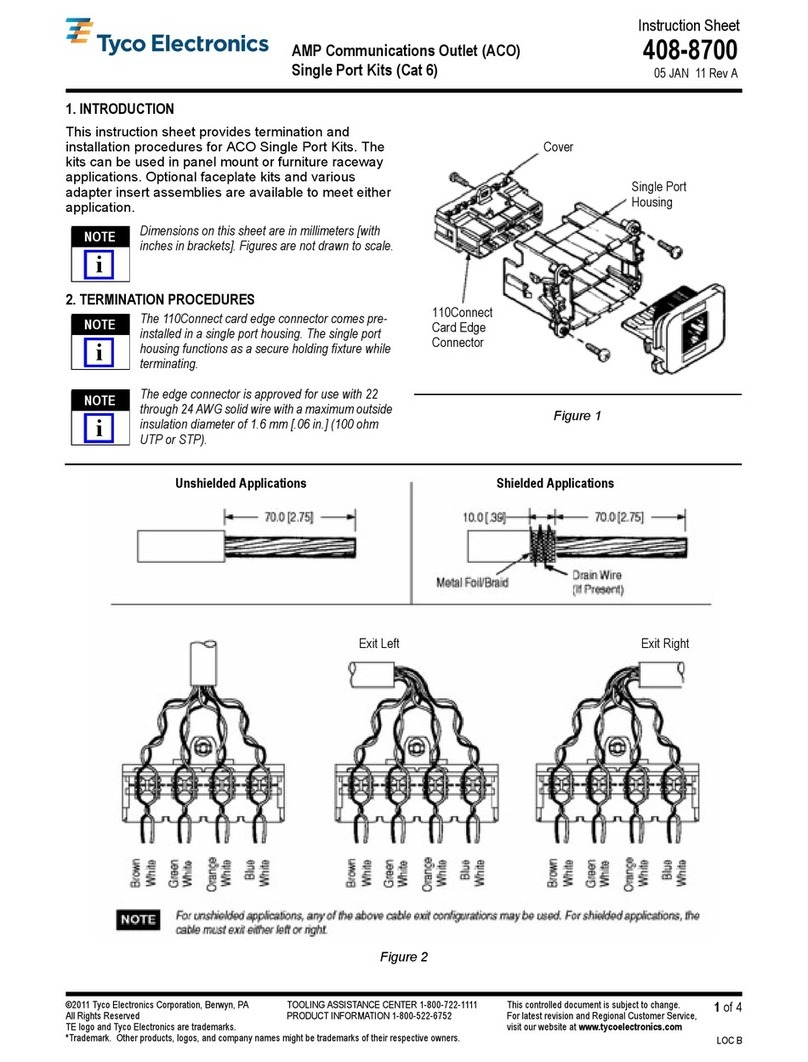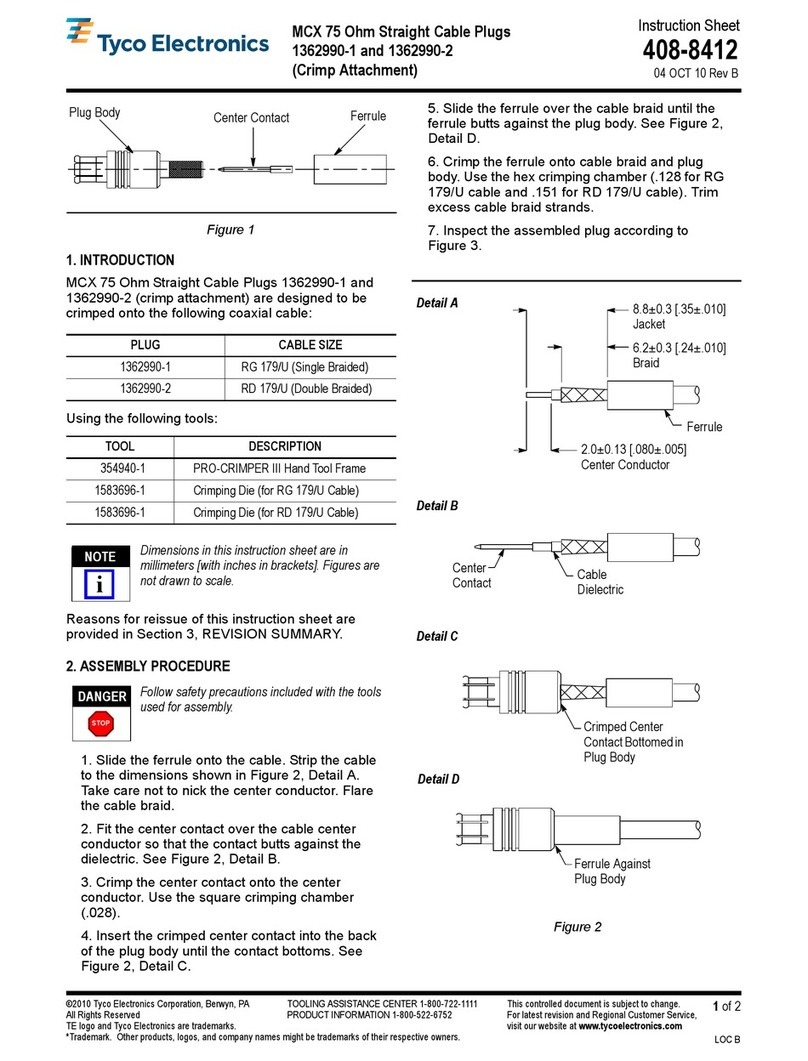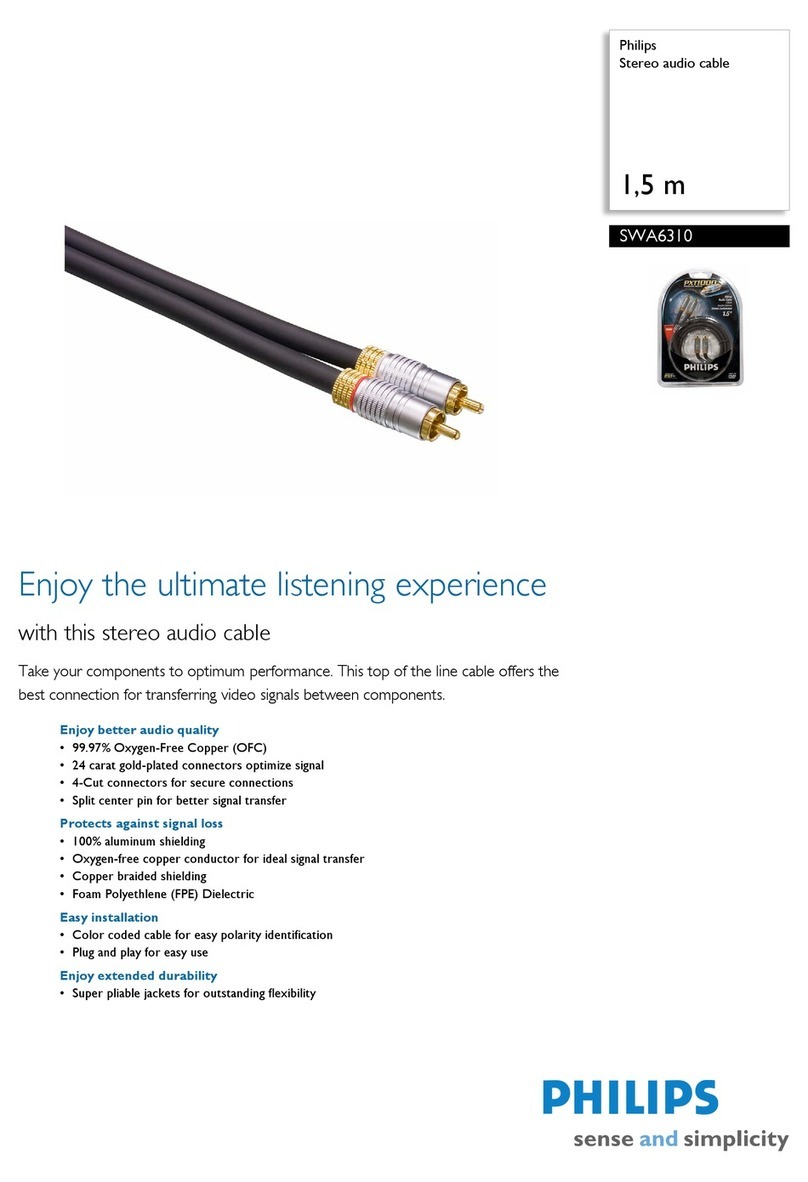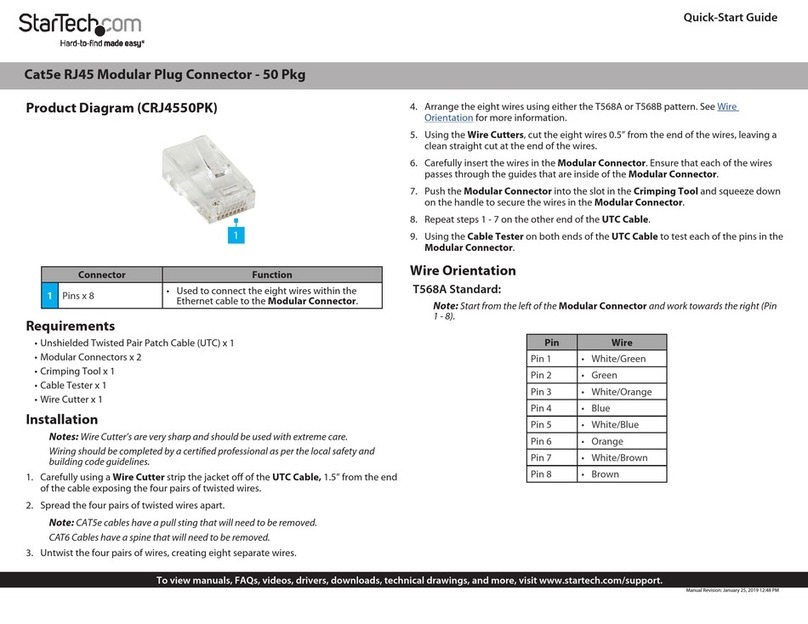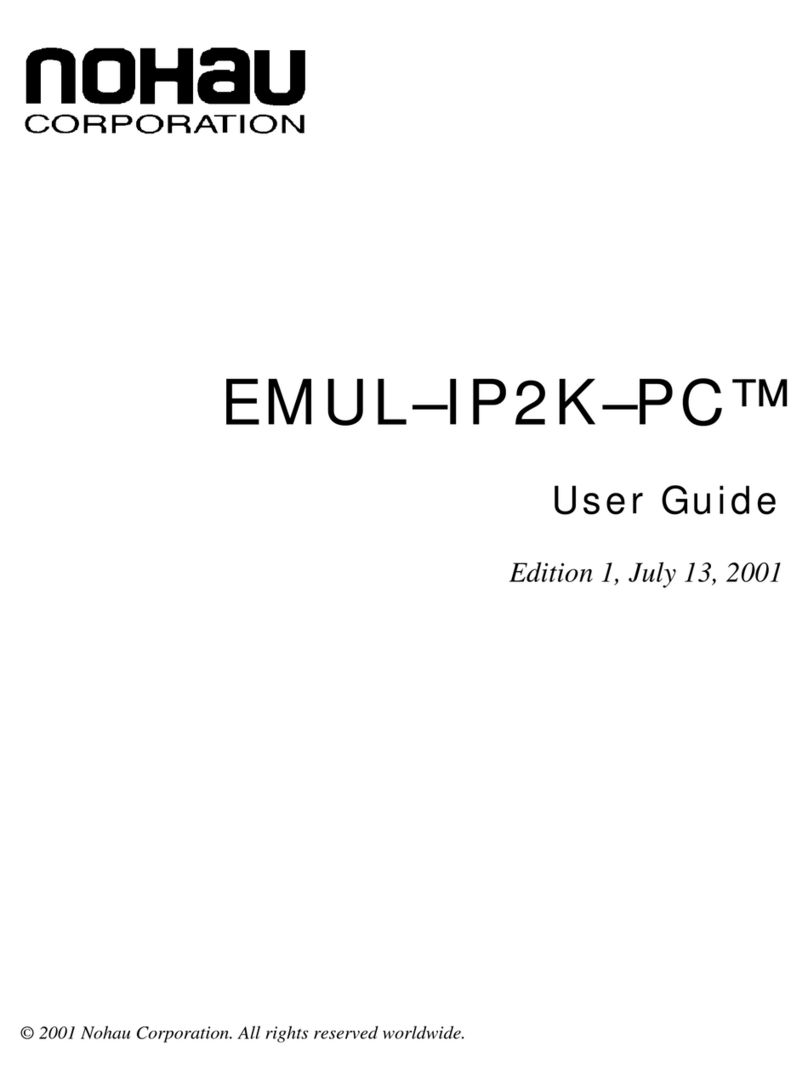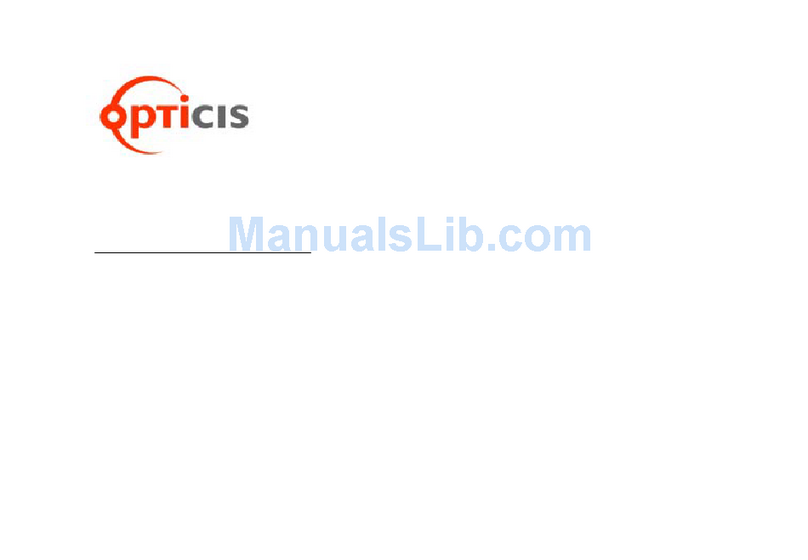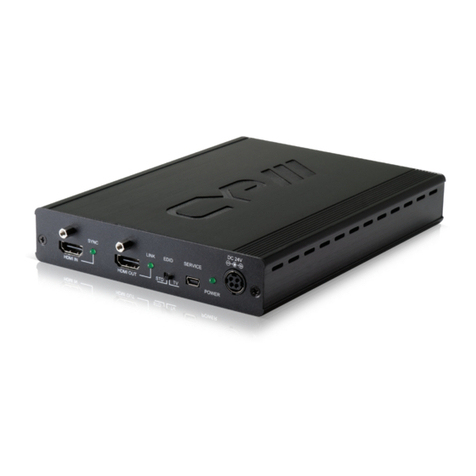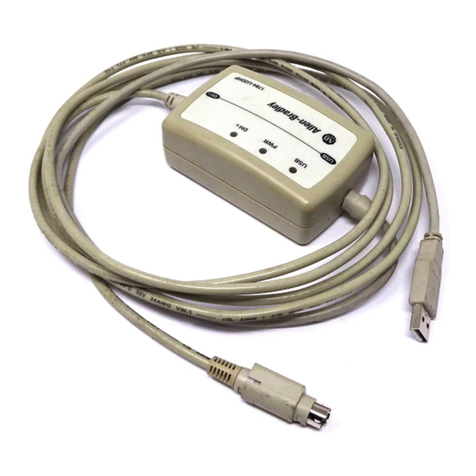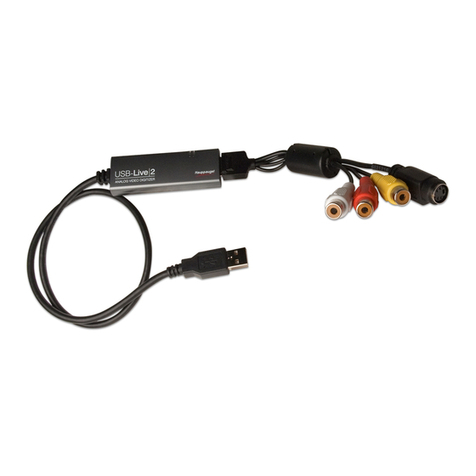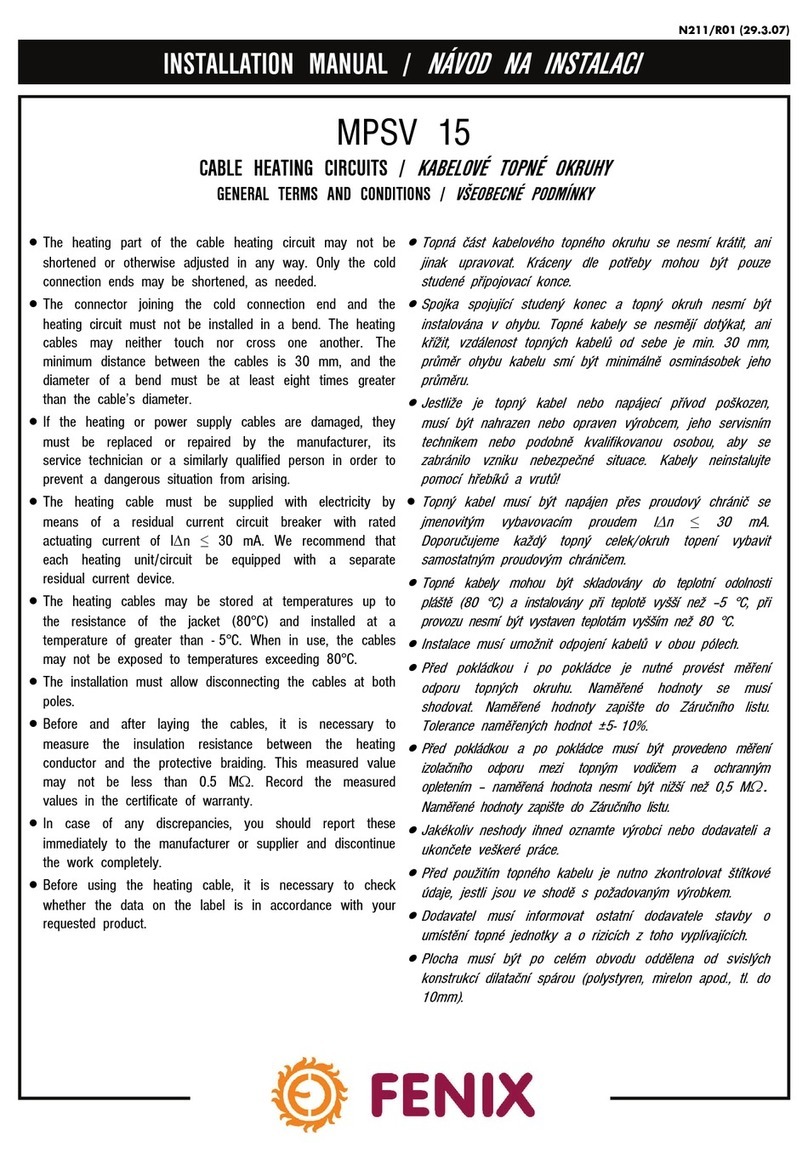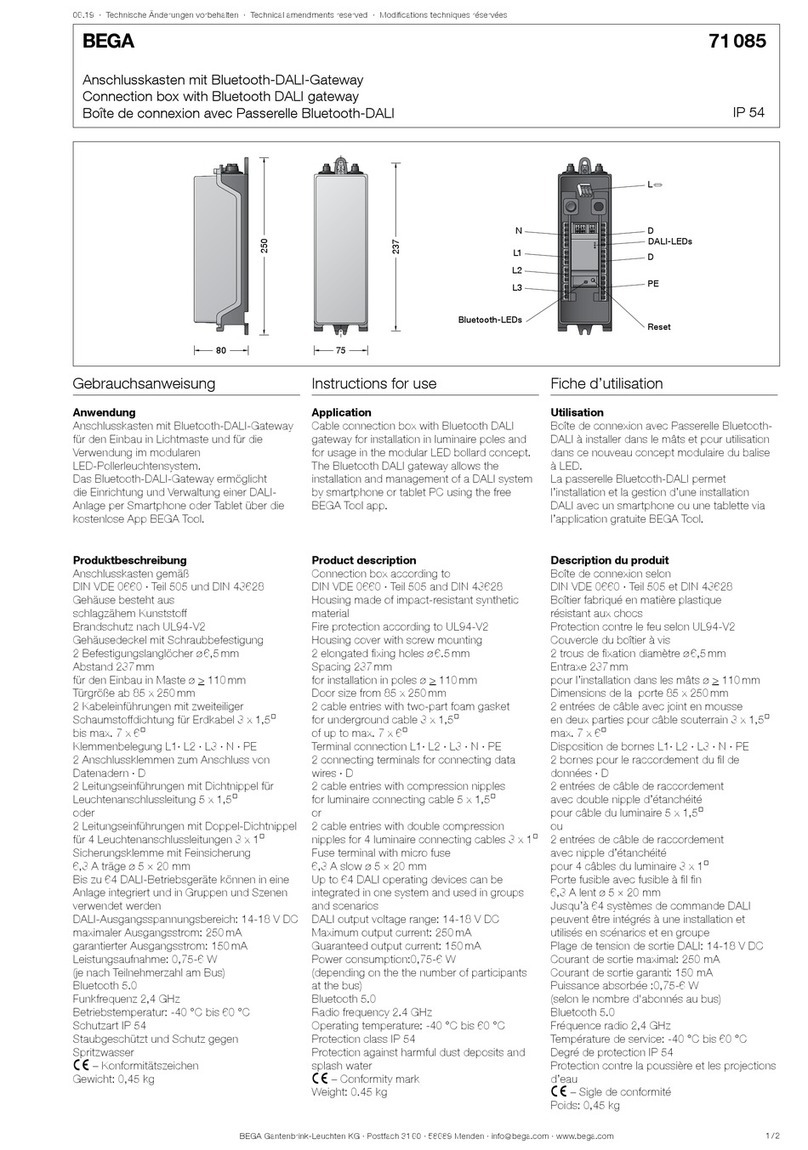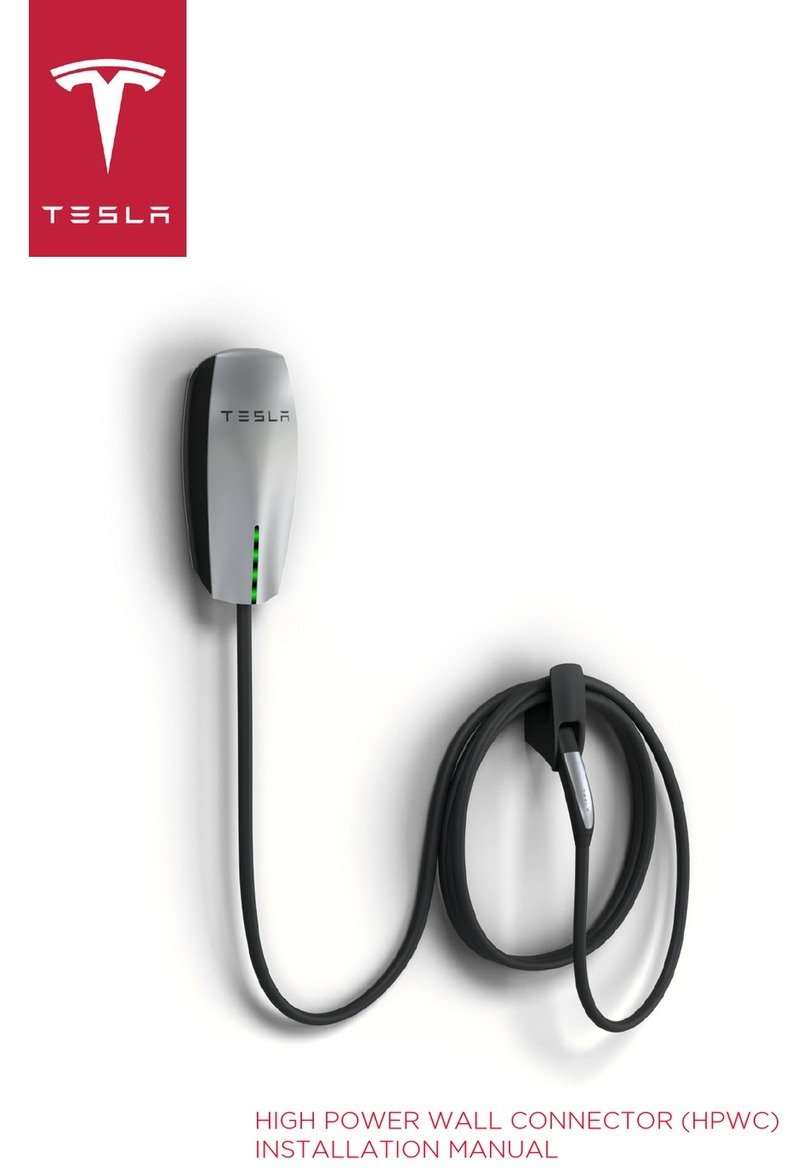
408- 10272
LightCrimp Plus ST Fiber Optic Connector Kit 2064757- 1
Rev C6 of 8 Tyco Electronics Corporation
4. Gently close the fiber clamp, and slide the
carriage forward. DO NOT touch the button while
sliding the carriage. See Figure 5, Detail C.
5. Open the fiber clamp, and remove the cleaved
fiber, and properly dispose of the scrap fiber.
DO NOT attempt to clean the fiber after it has
been cleaved.
6. For loose jacketed cable, if the small white
tubing was not inserted into the plunger of the
connector assembly (in Step 4 of Paragraph 5.2),
slide the small white tubing over the fiber as shown
in Figure 5, Detail D.
6.2. Crimping (Figures 6, 7, and 8)
1. Open the cable clamp of the cable holder, and
hold the buffer (with the cleaved end of the fiber
facing the connector) inside the clamp. Pull the end
of the fiber even with the front of the arm of the
cable holder, and holding the buffer in place, close
the clamp. See Figure 6, Detail A.
2. Carefully insert the fiber into the plunger of the
connector assembly until the the fiber bottoms
against the internal fiber. Make sure that the
remaining mark on the buffer enters the plunger.
The resultant bend in the buffer should hold the
fiber against the internal fiber. See Figure 6,
Detail B.
It is important that the fiber bottoms against, and
remains against, the internal fiber. If the mark
does not enter the plunger or if the fiber does not
seem to bottom against the internal fiber, the
fiber may be caught on internal guides. Rotating
the connector and backing the fiber out a small
amount and re--entering may help. However, if
the mark will not enter the plunger, the fiber must
be re--stripped.
Make sure that the fiber does not pull rearward
from the contact (with the internal fiber) during
the crimping operation.
3. Squeeze the handles of the hand tool until the
ratchet releases. Allow the handles to open fully.
Gently close the handles until you hear three clicks
from the ratchet.
4. With the connector assembly in the cable
holder, position the ferrule in the upper cavity of the
front die and the plunger in the upper cavity of the
rear die. It is important to make sure that the tip of
the plunger sits in the channel of the rear die with
the protruding disk of the plunger flat against the
wall of the cavity. If the plunger is not positioned
correctly, it will be crushed when the tool is
actuated. See Figure 6, Detail C.
The arrows marked on the front die indicate the
direction that the ferrule must be pointing when
the connector is positioned in that cavity.
For proper placement, and to avoid damage to
the fiber, the direction of the arrows must be
observed. Refer to Figure 6, Detail C and
Figure 7, Detail A.
5. Gently push the buffer toward the connector to
make sure that the fiber is still bottomed, then
slowly squeeze the tool handles together (using
both hands) until the ratchet releases. Allow the
handles to open fully, and remove the connector
assembly from the dies.
6. Position the plunger of the connector assembly
in the first (smallest) cavity of the front die with the
shoulder of the plunger against the edge of the
groove in the die and the ferrule pointing in the
direction of the arrow. See Figure 7, Detail A.
7. Slowly squeeze the tool handles together until
the ratchet releases. Allow the handles to open
fully, and remove the connector assembly from the
die.
8. Slide the crimp eyelet away from the connector
until the strength members are free, then slide the
crimp eyelet toward the connector until the strength
members and crimp eyelet butt against the
connector. See Figure 7, Detail B.
9. Slide the black tubing forward into the small
diameter end of the crimp eyelet until it butts
against the rear of the connector. See Figure 7,
Detail B.
10. Position the large diameter end of the crimp
eyelet in the last (largest) cavity of the front die
with the ferrule pointing in the direction of the
arrow. See Figure 7, Detail C. Slowly squeeze the
tool handles together until the ratchet releases.
Allow the handles to open fully.
11. Position the small diameter end of the crimp
eyelet in the middle cavity of the front die with the
ferrule pointing in the direction of the arrow. See
Figure 7, Detail D.
12. Slowly squeeze the tool handles together until
the ratchet releases. Allow the handles to open
fully, and remove the connector assembly from the
die.
13. Install the ferrule dust cap onto the ferrule.
Open the cable clamp of the cable holder, and
remove the cable from the clamp. Slide the strain
relief over the crimp eyelet until the strain relief
butts against the connector. See Figure 8.
14. Remove the connector assembly from the
cable holder. If not connecting connectors, keep
the ferrule dust cap on the ferrule.
CAUTION
!
NOTE
i
CAUTION
!
